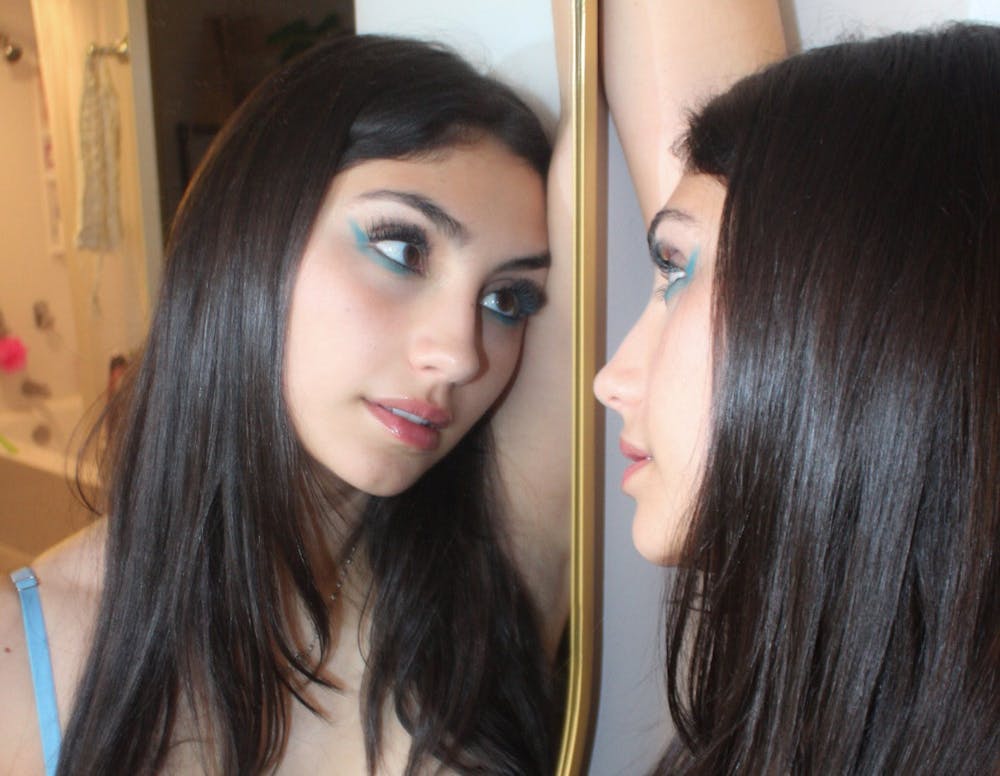FaceTuning, though, is slowly becoming cognitive. An edited image receives positive reinforcement in the form of likes and comments, and it can hit like a dopamine hit.
“It’s like, ‘woah, I’m popular, I like this feeling, I want to do it again,’ it can feed on itself,” said psychiatrist Helen Egger in an interview with Forbes.
Jasmine Fardouly, from the Department of Psychology at Macquarie University, calls the act of validating edited images of others an “envy spiral" that also creates an “airbrushed online environment that’s increasingly divorced from reality" in the Forbes article.
The envy spiral consumed me, and I began to slowly lose recognition of myself.
I stared at my body in the mirror and thought: Who was that? Obsession with what I looked like crept into everyday life. I skipped class when I was too afraid of people looking at me; during job interviews that ended with a thanks-but-no-thanks email, I chalked my failures up to the extra layer of fat puckered around my chin. I refused — and still refuse — to let other people take photographs of me. The idea of my body being forfeit, something that can be seen and interpreted by others, is often too much for me to bear.
According to Professor Phillippa Diedrichs’ recent research with the Dove Self-Esteem Project, 60 percent of girls feel upset when their real appearance doesn’t match the online version of themselves. “Young women who spent just 10 minutes taking, editing and posting selfies to social media reported feeling more anxious, less confident and less physically attractive afterward compared to those who didn’t engage in these behaviors.”
How do we navigate a world that asks far too much of women’s bodies? Women who do not comply with European, weight-obsessed beauty standards are written off as slobs, mannish, odd, unapproachable; women who do, especially those who deign to get plastic surgery or lose weight, are written off as shallow, unintelligent, materialistic and promiscuous.
This leads to Snapchat dysmorphia, the increasing phenomenon of people seeking out cosmetic surgery to achieve their filtered face in real life. The way we view ourselves in the glossy, cosmic joke of the internet can now be replicated in real-time (if you’ve got a few thousand dollars burning a hole in your pocket).
While many women feel a need to cater to the male gaze (please, I beg of you, do not do it!), I have always felt a need to cater to the female gaze. How will other women perceive me out in public? Will I fit in? Or will the cruel, instinctual ways we think about each other — slob or slut — prevent me from finding connection with other women?
While we can’t change the way companies like Snapchat operate, we can, however, adjust the way we interact with them, whether it means setting app time limits, refraining from posting selfies or divesting from social media altogether.
We can change the way we talk to each other and ourselves, too. Strong women lift one another up. Mindfulness about intrusive thoughts can help us untangle the way we think about ourselves and each other.
While I’m not entirely divorced from my insecurities, I practice more gratitude now. In the morning, I imagine my body in a thousand shades of green and blue, thanking it for protecting me, for moving me through the world. At night, I watch the envy spiral circle the drain, going, going and then gone.
To get the day's news and headlines in your inbox each morning, sign up for our email newsletters.
@savbrads
opinion@dailytarheel.com




